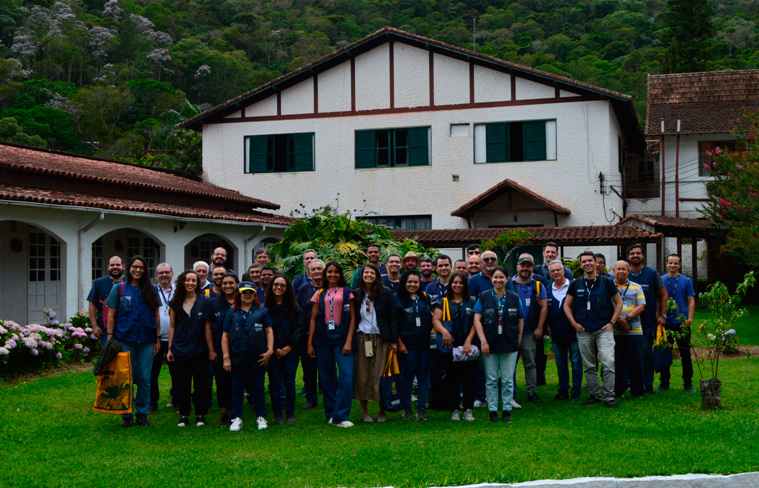IPP
Industry prices drop 0.82% in July, driven by the food sector
August 30, 2023 09h00 AM | Last Updated: September 02, 2023 12h03 AM

Industry prices fell by 0.82% from July to June, recording the sixth consecutive month of decrease. That is the first time the Producer Price Index (IPP), released today (30) by the IBGE, has recorded six consecutive decreases since the start of the time series, in 2014. As for the cumulative index in the year, there was a drop of 7.23%, the lowest for a month of July since the beginning of the time series. The cumulative index in 12 months also hit a record and was the lowest since the start of the series, standing at -14.07%.
The result of July shows the continuation of this trend, recently observed. In the last 12 months, 11 months recorded price drops in the monthly comparison. “One of the reasons is the fall of the dollar. This year alone, the dollar depreciated 8.4%. As a result, the price in reais of the exported product drops and, at the same time, the cost of imported raw material is also lower,” says Murilo Alvim, analyst of the survey.
Among the 24 activities listed by the IPP, 16 recorded fall of prices from June to July. The sector accounting for the main influence was food products, which dropped 1.36% and accounted for -0.33 percentage points of the overall result of industry. “Besides the dollar, there is a trend to decrease of several commodities. As a result, the sector of food products recorded major decreases in meats and dairy products, due to the reduction o the cost of acquisition of commodities such as milk and soybeans, which are the main components of animal feed,” Mr. Alvim explains.
Other two commodities that have recorded decreases throughout the year are crude oil and iron ore. “These products have an impact on several sectors of national industry, such as petroleum refining and biofuels and basic metals, which have had current and cumulative drops in the survey,” the analyst recalls. These commodities, nevetheless, recorded an increase from June to July and help explain the increase observed in mining and quarrying industry. The prices of this sector in July rose 5.08% from June, and registered the biggest change in the country and the third main contribution (0.22 p.p.). However, the cumulative index in the year remains negative (-1.43%). “The increase observed in the prices of petroleum in July is related to the market expectation for a global reduction of supply of this product after the reduction of stocks in the USA and a cut of production in countries such as Saudi Arabia and Russia.”
Iron ore also rose in the month, although there was also cumulative decrease from July 2022. According to the analyst, in July, the marked expected an increase of demand after the release of an economic incentive plan of China aiming at construction. Even so, together with the reduction of costs of acquisition of this commodity in the last few months, the sector of basic metals dropped by 2.59% from the previous month, and had the third consecutive negative result. That was the fourth main change among the activities, as well as the fourth main influence on the general result of industry (-0.17 p.p. out of -0.82%).
Broad categories: non-durable consumer goods records main decrease
All the broad economic categories recorded decreased from June to July. Consumer goods dropped 1.19%, with a change of -0.22% in durable consumer goods, whereas semi and non-durable consumer goods reached -1.39%. Intermediate goods fell 0.63%, whereas capital goods had a decrease of 0.42%.
As for the cumulative index in the year, the change in broad economic categories reached -10.84% in intermediate goods, the highest one. Capital goods reached -1.69% whereas consumer goods hit –2.51%. Durable consumer goods had a cumulative change of 1.54%, whereas semi and non-durable goods, by -3.30%.
As for the cumulative index in 12 months, the change of prices of capital goods was 0.81%, whereas prices of intermediate goods changed by -19.80% in this period. The prices of consumer goods changed by -7.08%; with durable consumer goods changing by 3.51% and those of semi and non-durable consumer goods, by -9.01%.
More about the survey
The IPP aims at measuring the average change of sale prices received by the domestic producers of goods and services, as well as their evolution over time, signaling the short-term inflationary trends in Brazil. It is a key indicator for the macroeconomic follow up and, consequently, a valuable analytical instrument for decision makers, either public or private.
The survey investigates, in slightly more than 2,100 enterprises, the prices received by producers, free from tax, tariffs and freight, defined according the most usual commercial practices. Nearly 6 thousand prices are collected monthly. The complete IPP tables with results are available at Sidra.
The next release of the IPP, related to August, will be on September 28.




















